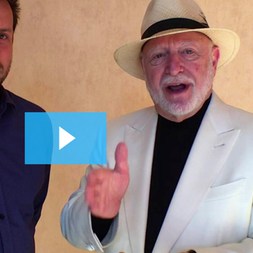System Architect | Brad Sugars: actioncoach.com
No one said that managing a team was ever going to be easy. Ultimately, we all have very different ways of building success, too. But how do you inspire passion in others? And how do you successfully harness that passion? Everyone has to start somewhere, including the world’s best leaders.
A successful and effective leader is one who will not only drive results but who understands their team inside and out. A great manager is one who understands the strengths of the people around them, and how to harness those strengths. Great leadership also depends on assigning accountability. It’s also about keeping a great sense of clarity in everything you do.
That’s a lot to take in! It’s also plenty to be juggling daily. There’s no magic formula when it comes to the perfect management strategy, but there are many steps you can take to transform the way you lead.
There’s a fine balance between being too forceful and too laid-back. If you’re too harsh, or too soft, your team isn’t going to produce the results you’re striving for. Your team and your brand are only ever as good as the people you have working with you!
Every leader is going to be different. But where they are similar lies in the way they treat their staff, and the way they organise their goals. With this in mind, let’s take a look at five steps you can take to enhance your management and leadership profile.
How to Enhance Your Management Profile
Step 1: Create detailed and specific job descriptions for each of your top 10 employees.
- Make sure your people know what their job is, what they are expected to do, and the timeframe it should be done in.
- For the majority of employment positions, use a checklist and systemization.
Step 2: Create a culture of to do lists, accountability and regular meetings with a specific purpose.
- Every day, team members create a daily list of their tasks for the next day. The manager checks these lists and makes sure tasks are prioritised.
- Every Friday, have each team member create a list of what needs to be done in the following week.
- On Monday morning have a weekly “work-in-progress” meeting with your people.
- Suggestion: Go through each weekly list and communicate, setting time frames by which jobs should be done.
- On Thursday have a one-on-one meeting with each team member.
- Go over their weekly list, their key performance indicator and where they are with what they are doing.
Step 3: Identify key performance indicators and measure the activities and performance of your employees.
Step 4: Build tailored training programs for each employee.
- Profile your team, to understand their behavioural analysis and offer them training to improve their performance.
Step 5: The Five Pillars of Leadership
- Communicate with your team is happening (what, where, how). Set and communicate the goals.
- Communicate the vision and the mission of the company.
- Communicate the company’s culture.
- Suggestion:If you haven’t documented your culture, visit Brad Sugars’ website actioncoah.com and take a look at their 14 points on culture.
- When recruiting, find the right people and hire the best of the best.
- Every day, communicate recognition to someone in your organisation.
Definition of Leadership and Management
- Management is about creating competent, productive people who know how they are doing their job.
- Leadership is about creating passionate, focused people. Give them a goal, a vision, a destination.
- To get the results in a business that we want, we need to have good management and good leadership. Management is where we start. If we see negative behaviours in an organisation, it’s usually due to a lack of management.
- Remember that great people build your company for you. The quality and calibre of your people come from the quality and calibre of your management and your leadership.
Be the Leader They Need You to Be
Being an effective and inspiring leader in this day and age revolves around planning. That means keeping your team members in the loop and ensuring that there are clear processes each and every step of the way. The biggest and best businesses have been able to grow successfully thanks to a sharp eye for organisation.
It’s good to talk. Look carefully at what drives your team. Try to understand what makes them passionate for what they do, and tap into that. Assemble an action plan and hierarchy of tasks that allow them to flourish under pressure. Above all, lead as you would want to be led.
With a clear company culture in mind, and with communication between you and your team at a healthy level, there are no reasons why you won’t be able to lead your firm into the next stage of success. Avoid micro-managing. Avoid the temptation to be too friendly or too authoritative. You’re there to ensure your team can achieve their absolute best.
Every manager in the country will likely have their own tips to share. What are some of your stories about leadership and management? Have you been able to use systems to help transform the way your team works together? We’d love to hear from you. Let us know some of your stories and let’s start learning from each other. In the meantime, do always feel free to put the above system into practice.
System Architect – Brad Sugars

Originally the business coaching company’s global headquarters were based in Milton, Brisbane in Australia. It also had offices in London and Las Vegas at the same time. In 2007, Brad Sugars decided to close both the London office and Brisbane headquarters for the ActionCOACH brand and base everything out of Las Vegas.
The decision to leave Australia was based on business practicality.
Brad Sugars started the ActionCOACH brand (formerly known as Action International) when he was in his early twenties. Today the company is internationally recognised as the leading global business coaching firm and one of the leading and most awarded franchises in the world today. So how did a twenty-something Australian create this global powerhouse? He did it through hard work, determination and a well-organized, systemized approach that leads businesses to profits.













